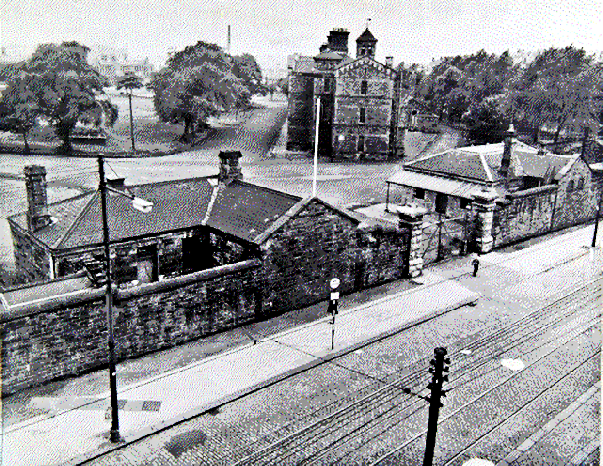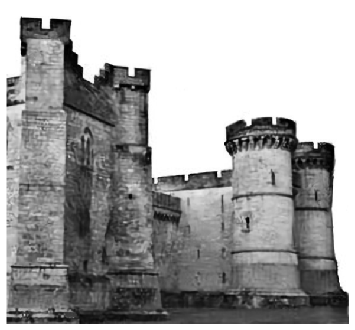The Yapp’s Family Site


Georges Military Career
George actually signed up to join the army on the 15th March 1945 and joined his unit on the 19th April 1945 he had previously served in the Army cadet force Essex regiment and he had a requested an interest to to join the Durham Light infantry.
He reported to No.9 Primary Training Centre at Mary Hill barracks Glasgow. This unit was initially formed as the No.41 Infantry Training Centre at Glasgow in January 1942. In July 1942, the unit was re designated as the No.9 Primary Training centre Glasgow, the Centre was disbanded on 7 November 1946.
9 Primary Training Centre 1945

Maryhill barracks Glasgow long since demolished and now Wynford housing estate picture date unknown looking at street lights possibly 60s [Google images]
Durham Light Infantry Brancepeth Castle camp 31st May 1945
In 1939 Brancepeth Castle in county Durham became the regimental headquarters for the Durham Light Infantry. The necessity of WW 2. dictated the building of a military camp of in excess of 120 units mainly designated huts ‘south of the village during the Second World War. he Durham Light Infantry left the Castle in 1962.


Brancepeth castle [Google images]
Map of Brancepeth Camp 1945. [Image Mrs A Rix.dec. collection]
Brancepeth Castle camp Co. Durham then Internal move to DLI and Duke of Wellington's camp
He completed his basic training at the Durham Light Infantry Brancepeth Castle camp Co Durham. On completion of his basic training. On the 7th November 1945. He was posted internally to the D. L. I and Duke of Wellington's camp on permanent Staff at Brancepeth castle..
He was enjoying his service life in the D.L.I as a PSI unpaid L/Cpl by the 7/11/45 to paid Cpl 29/8/46.
30th Sept 1946:
P/A [permanently Attached] 30 Training battalion Scotland
Regrettably George had married my mother and as they were both serving at Brancepeth Castle camp, and the ruling at the time was that they could not both serve at the same camp, George was posted and permanently attached to 30 Training Battalion Scotland. George was also not eligible for marriage allowance because he was under 25 years of age! This was to have a baneful effect on his circumstances as his wife was now pregnant with twins
My Comment: It really wasn't a married mans Army with archaic outmoded regulations of this ilk.
School of infantry technical wing at Warminster 2nd March 1948.
Relinquished his rank on posting to the School of infantry technical wing at Warminster. I am sure that whilst he was at Warminster he obtained Knowledge that The Kings Shropshire Light Infantry were to be posted from public service duties in London to training duties in Hong Kong.
Kings Shropshire Light Infantry 28th June 1949
On 28/6/1949 he was drafted to the Kings Shropshire Light Infantry and relinquishing his tapes on posting back to Private. As the 1st KSLI was on public service duties in London, this would have fitted well with George being a Londoner! Short lived as the Regiment embarked for training duties Hong Kong on August 11th 1949 it embarked at Liverpool on the Transport Empress of Australia for Hong Kong.
Singapore FARELF] the RASC [Royal Army Service Corps] school Far East 28th November 1949
George embarked with the KSLI Hong Kong to disembark at Singapore It was here in Singapore he had his clerks course trade training at the FARELF [Far East Land Forces] the R.A.S.C [Royal Army Service Corps] school Far East at Nee Soon Singapore. He qualified as a Clerk after completing his trade training course from 24th November 1949 to the 30th June1950 passing his trade test and passing out as a Clerk GD [general duties] Class III Group "C" "Z".
Hong Kong
The1st July 1950 George was posted back to the KSLI his regiment now in Hong Kong.
Korean War 1951
The Battalion arrived in the Korean War 13th May 1951 They were bussed some 40 odd miles north through the devastated city of Soul to point some three miles behind the front line where they de-bussed.
It was not far from here eight days later that George was to be mortally wounded and died from his wounds lying on a stretcher along with the other 11 wounded comrades waiting many hours for a CASEVAC helicopter. This was due to the fact that the battle group had no communications with command [disturbing information!] this meant that he nor his comrades could receive medical aid at a service hospital until a manual contact was made to call in CASEVAC helicopters.
[Sons research and comment]
It will never be known, that had communications been maintained thus allowing casevac by helicopter to MASH
whether George would have survived?
| About us |
| Contact us |
| our policy |
| Viewing Notes |
| Acknowledgements |
| Yapp family |
| james Yapps Cockney history |
| William and Eliza |
| Hannah and Mathew |
| James William Yapp |
| Mat and Alice |
| Jim & Joyce |
| Aussie connection |
| Family not forgotten |
| Origination 1 |
| Origination 2 |
| Origination 3 |
| KSLI 1951 |
| KSLI journal |
| Journal pt.1 |
| Journal pt.2 |
| Bill Griffiths |
| LCpl Hanlon |
| Bob_West |
| KSLI Roll of Honour |
| News Clips |
| Military Career |
| George Yapp KIA Korea |
| George service pictures |
| Communications |
| Georges Letters 1 |
| Georges letters 2 |
| Last letters home |
| Georges Awards |
| UN Memorial Cemetery Korea |
| Georges Story |
| Exchange rates |
| World Time |
| Speed Tester |